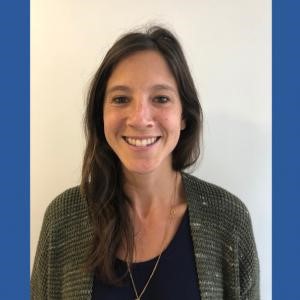The topic: do the ends justify the means?
The assignment: now that we’ve talked about this question, and why characters in our story have made the choices they did, do you agree?
Kevin is frozen in a panic, his mind has gone blank and he can’t find a place to start. Shatira puts her hand down slowly; she didn’t have a chance to share her final thought during the discussion. Coming over to their table, I say, “Hey, Kevin, would you mind letting Shatira bounce her ideas off you?” Soon, their heads are together as they begin to write. At another table, Tatiana and Floyd use a graphic organizer to connect context clues to make inferences about the characters’ motivations. Meanwhile, Kendra steps out into the hallway, and in the quiet space she uses voice-to-text to dictate her response.
This is a snapshot of my 4th grade classroom in a full inclusion, urban public school. In general, the schools that serve this population are understaffed and underfunded. These schools also experience a significantly higher rate of teacher turnover, so the educators in front of the highest need students are often the least experienced. Many urban public schools lack critical services like special education and counseling. These schools try to overcome this shortfall by practicing a kind of inclusive education where a single teacher with dual licensure teaches a classroom of students with mixed educational needs.
With the advent of remote teaching, providing support for the highest need students has become even more challenging. In many urban school districts, students engaged in remote learning at very low rates, and the highest need students logged in at the lowest rates. This spring, students with disabilities logged into remote learning platforms at half the rate of general education populations.
At my school, students with disabilities logged in with the same frequency as their non-disabled peers, a rate that was 20 percent higher than the general average for Boston Public Schools. We are a full inclusion school and each classroom has the benefit of two full-time teachers: special and general education. Students receive services like speech, adaptive behavior analysis, and occupational therapy in the classroom, with goals and skill practice integrated into the activities in the curriculum. During a heated discussion about whether a character is a villain or just misunderstood, an ABA therapist helps Floyd remember to wait his turn to speak and a speech language pathologist gives Tatiana guidance on how to explain her idea, all while a teacher mediates and the debate flourishes. The time and collaboration amongst professionals created and nurtured by this system enables us to individualize education for all our students.
The benefits of two-teacher inclusion have been multiplied with school closures. It maximizes student support and differentiation, and bolsters access to grade-level curriculum. With more staff, we are able to connect with families frequently, and provide the support that many students need to engage in online learning. Teachers in an inclusive setting use Universal Design principles that incorporate a range of learning styles. Our students were already familiar with the digital tools essential to communicating remotely: commenting on each others’ posts, using speech-to-text software to compose essays, and uploading videos to explain their solutions to math problems.
While we haven’t solved all the problems of remote learning, our unique community has been able to create an ever-evolving system that ensures access to education for all of our students. Instead of a single educator supporting 25 children, our class has a team of seven educators, paraprofessionals, and service providers collaborating to secure equitable access to education. This included daily instructional and social Zoom meetings for the whole group, and small group to one-on-one meetings for focused skill development. Shatira looked forward to Wednesdays, when she and her math group met to solve a challenging problem in a Zoom breakout room and she attended a weekly social skills group led by a speech language pathologist and occupational therapist. Tatiana and Floyd were always excited to see Shatira there, and connected what they’ve learned about social context clues to the book they read together in class. Each of these students had a personalized weekly schedule, where the assignments, meetings, therapy sessions, and informal social meet-ups were all in one place.
As we begin this unprecedented school year, we are keeping equity and access at the forefront of the conversation. My school has tapped into the institutional wisdom and investment of the teachers to shape our return to the classroom through re-opening and anti-racism committees. With an extra week of professional development that includes time and space for collaboration and planning as well as remote learning best practices, teachers will be able to educate students with flexibility using the most effective tools. We are strengthening our partnerships with families through one-on-one video conferences and choice in learning models, and once the school year launches, individualized schedules with embedded hyperlinks to help families stay organized. Most of all, we’re viewing this year as an opportunity to transform the way we teach, becoming more equitable and student-centered.
Teresa Siarnacki teaches 4th grade special education at the Henderson Inclusion School, Boston’s only fully inclusive K12 school. She is a 2019–20 Teach Plus Massachusetts Policy Fellow.

